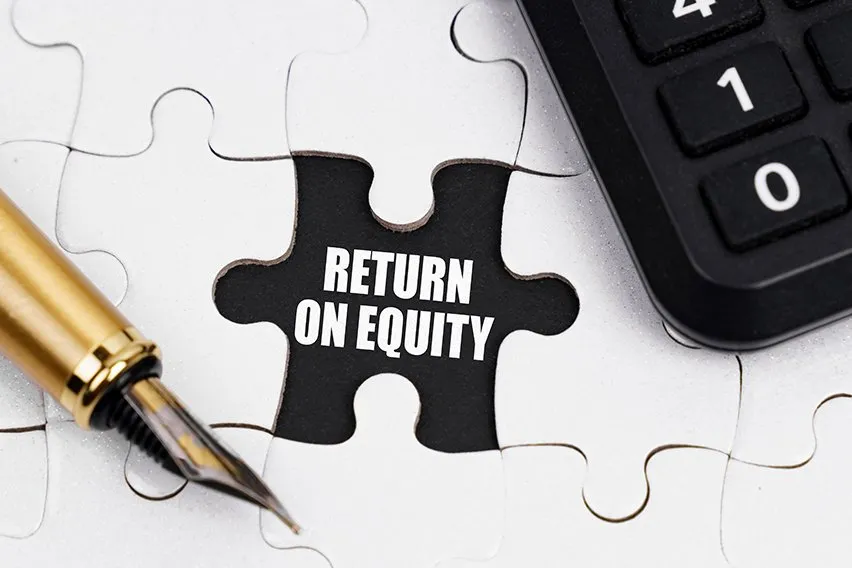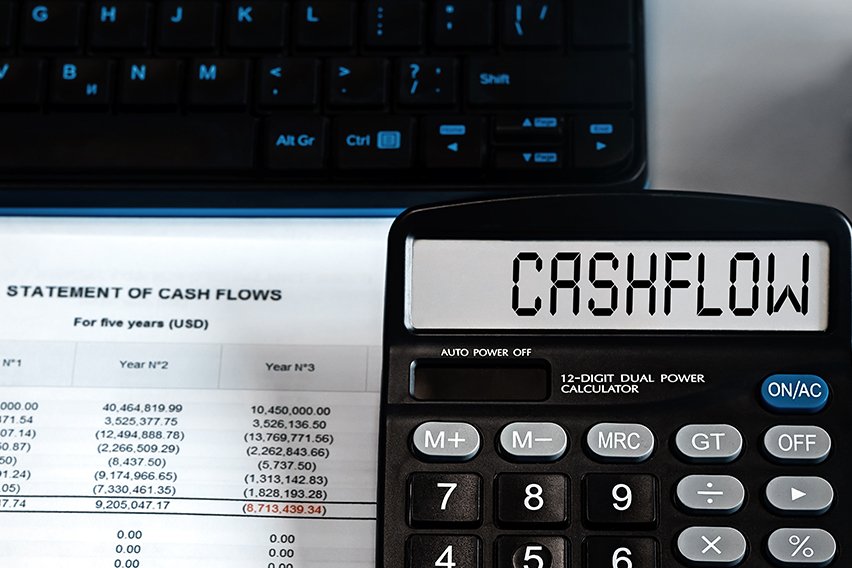What Is Return on Equity (ROE)? Definition & Calculation Guide

The world of investment is a tough place to be if you don’t know your stuff.
There is a mountain of research that needs to be done, terms that need to be learned, and a good amount of skill and luck required to be successful.
When an investor is showing interest in a company, there are a number of metrics that they will look at. This is to try and gauge its potential long and short term profitability. One of those metrics is the Return on Equity, or the ROE.
But what exactly is Return on Equity? We’ll take a closer look at the definition. We’ll also give you a calculation guide so that you can start figuring out how to calculate your own business financial strength.
Here’s What We’ll Cover:
What Is the Calculation for Return on Equity?
What Is an Example of Return on Equity?
Why Is Return on Equity Important?
What Are the Downsides of ROE?
What Is Return on Equity?
Return on Equity, or ROE, is a metric that measures a particular company’s profitability. It specifically shows the business’s net income, or annual return, which is then divided by the total shareholder equity.
The end result is shown as a percentage that shows total profit per pound of the overall assets.
This percentage reveals how much after-tax income a company has earned. This is when compared with the total amount of shareholder equity that would be found on the balance sheet of the business.
To put it simply, it shows the percentage of investor capital that has been converted into income. This gives a decent sense of how efficiently the company has been handling their money.
So a business with a higher return on equity would be more likely to be able to generate a better income with further investment capital.

What Is the Calculation for Return on Equity?
The formula that is used to calculate return on equity is simple, straightforward and easy to remember.
Return on Equity=Net IncomeAverage Common Stockholder Equity for the Period
Which can also be written as:
ROE=NISE
If you’re struggling to figure out what your net income is or what total shareholder equity is, then it’s quite simple to figure out:
What Is Net Income?
A company’s net income is the profit shown after all of the annual liabilities have been paid and accounted for. This includes things such as:
- Taxes
- Salaries
- Cost of goods and products
- Any other operating expenses
However, it also includes more subtle forms of loss and liability such as interest rate payments and depreciation.
After you’ve accounted for all of these losses and liabilities, the businesses remaining annual profits are its net income. This would be for that particular financial year. So essentially, the money that the business made.
What Is Total Shareholder Equity?
A company’s shareholder equity is the total value of the business’ assets minus its liabilities.
A company’s assets include basically everything that the business owns. This includes things such as:
- Cash
- Cash-like products
- Value of property including:
- Physical infrastructure
- Real estate
- Investments
- Intellectual property
- Other corporate holdings
A company’s liabilities will include both short term liabilities such as payroll and immediate debts. It will also include long term liabilities such as bonds, mortgages, retirement funds and any other form of corporate expense.
There is a significant overlap between net income and shareholder equity. This can make things seem quite confusing and complicated. However, both terms can be simply put to reduce confusion.
- Net income being earrings against expenses for a given year.
- Shareholder equity is the value of the company’s total assets and debts.
What Is an Example of Return on Equity?
Let’s say that you own a second hand car business.
In the last financial year, you sold 10 cars. Once all of your annual liabilities have been paid and accounted for you’ve been left with a net profit of £10,000 and your shareholder equity is worth £50,000.
This would mean that the return on equity would be calculated as such using the return on equity formula:
ROE=NISE
10,00050,000=20%
So this would mean that for every pound of overall assets that your second hand car business had last year, it saw a return of 20p.
Why Is Return on Equity Important?
It is expressed as a percentage to allow investors to evaluate this easily and leaves less room for confusion or trickery. For example, a business may show high sales numbers but with equally high deductions.
If this wasn’t shown as a simple percentage, then the numbers could be manipulated into making a low profit company look like it’s making a huge profit.
Return on equity allows an investor to put a business under a microscope to break that income down by how much money it actually took to build their business. So while that business may show a huge amount of net income, they may well have spent a huge amount of capital to generate those sales.
However, let’s take the previous example of our second hand car business into consideration. They only showed a net income of £10,000 over the year, but they also showed a very healthy 20% return for every pound that a shareholder invested into the company.
This just shows that it’s easy to be swayed by numbers. So by putting ROE as a percentage, it allows an investor to look at things clearly and equally.

What Are the Downsides of ROE?
Whilst ROE is a popular metric that investors consistently use, there is a downside.
Because liabilities such as long term debt are subtracted from assets when the shareholders’ equity is calculated, a company’s debt affects its ROE. More specifically, a higher debt load will reduce the denominator of the equation which in turn will yield a higher ROE.
So if you took on £10,000 in debt to buy 10,000 assets, then the assets and liabilities will cancel each other out. This would yield a better picture of the company’s financial health.
But if you instead took out £20,000 in debt to still buy 10,000 assets, then you would post a higher ROE. That’s because the denominator of the equation would be reduced by the additional £10,000 in debt.
So heavily indebted companies can yield artificially high ROEs.
Key Takeaways
ROE is a well trusted and often used profitability metric to establish a company’s financial performance and cash flow.
However, numbers can be manipulated so it should never be used in a vacuum. When considering an investment, there should be a large amount of due diligence done that doesn’t simply rely on one metric.
Any investment is a risk, so the more research and calculations that you put in, the more confident you can be with going forward with the investment.
Are you looking for more business advice on everything from starting a new business to new business practices?
Then check out the FreshBooks Resource Hub.
RELATED ARTICLES

 What Is Accounts Payable Automation & 3 AP Automation Software
What Is Accounts Payable Automation & 3 AP Automation Software Discount Rate Formula Definition & How to Calculate It
Discount Rate Formula Definition & How to Calculate It Bookkeeping Basics: A Small Business Guide
Bookkeeping Basics: A Small Business Guide How to Make a Cash Flow Forecast
How to Make a Cash Flow Forecast How to Calculate Revenue? Sales Revenue Formula
How to Calculate Revenue? Sales Revenue Formula What Is Rate of Return (ROR) & How to Calculate It
What Is Rate of Return (ROR) & How to Calculate It